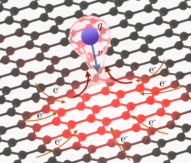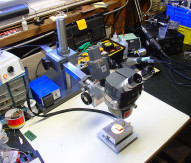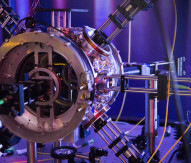
EU consortium to develop plasma accelerator
The UK’s University of Liverpool has announced a £3m (~€4.2m) European research consortium to develop a novel plasma particle accelerator.
Funded by Horizon 2020, the European Plasma Research Accelerator with eXcellence In Applications (EuPRAXIA) will produce a design study for a European plasma research accelerator focusing on applications of the new technology. The university will contribute to the design of the plasma structures required for a laser-driven electron source, as well as for a laser-driven accelerator stage.
According to the university’s website, Professor Carsten P Welsch and his team, based at the Cockcroft Institute, ‘will study the diagnostics required to monitor the shot-to-shot operation of plasma structures and contribute to the diagnostic of wakefield structures and electron beams.’
Speaking about the research infrastructure, Welsch commented: “EuPRAXIA will define the missing step towards a new generation of plasma accelerators with the potential for dramatically reduced size and cost. It will ensure that Europe is kept at the forefront of accelerator-based science and applications.”
According to Liverpool, EuPRAXIA is the required intermediate step between proof-of-principle experiments and versatile ultra-compact accelerators for industry, medicine or science. The study will design accelerator technology, laser systems and feedbacks for improving the quality of plasma-accelerated electron beams. Two user areas will be developed for a novel free-electron laser and for high energy physics.’
The EuPRAXIA consortium includes 16 laboratories and universities from five EU member states. In addition, it includes 18 associated partners from eight countries, involving leading institutes in the EU, Japan, China and the United States. ‘By the end of 2019,’ the website states, ‘EuPRAXIA will produce a conceptual design report for the worldwide first five Giga-Electronvolts plasma-based accelerator with industrial beam quality and dedicated user areas.
‘An implementation model will be proposed, including a comparative study of possible sites in Europe, a cost estimate and a model for distributed construction but installation at one central site.’




